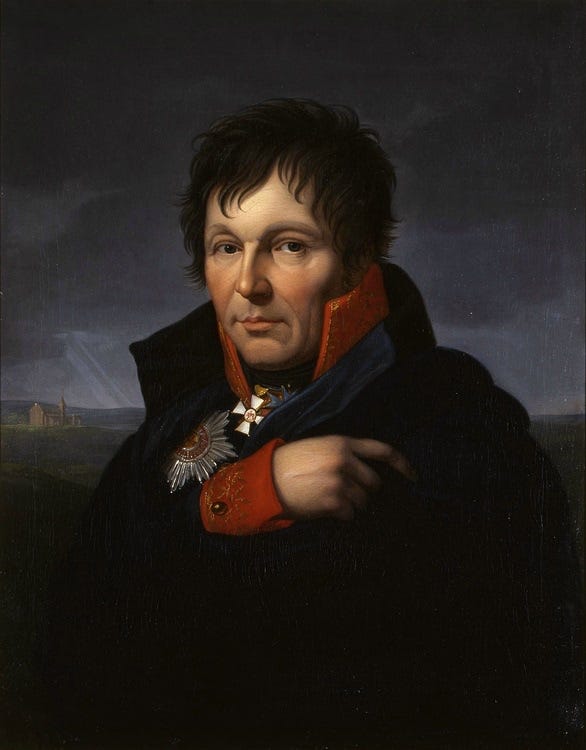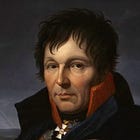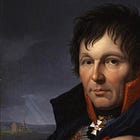Scharnhorst: The Formative Years
Book Review
Gerhard von Scharnhorst enjoys the rare distinction of membership in the martial pantheons of six very different regimes. Along with his contemporary, colleague and confederate , Anton Neidhardt von Gneisenau, he was honored, as soldier, scholar, and patriot, by the Kingdom of Prussia, the German Empire, the Weimar Republic, the Third Reich, the German Democratic Republic, and the German Federal Republic. Outside of Germany, United States Marines of the Quantico Renaissance (1988-1992) admired him as a paragon of military professionalism.
The last-named celebration of the life and work of Gerhard von Scharnhorst owes much to a book called The Enlightened Soldier: Scharnhorst and the Militärische Gesellschaft in Berlin, 1801-1805. Written by Charles Edward White, this monograph dealt chiefly with the first four of the twelve years that Scharnhorst would spend in the service of the Kingdom of Prussia. Nonetheless, it provided readers with a unique window into an inspiring approach to the study and practice of the profession of arms, one very much at odds with the dominant culture of the US Armed Forces of the day. As such, it proved popular with professionals searching for an alternative to the brain-dead scientism, careerist cheerleading, and nascent néoconnerie of the times in which they served.
The publisher of The Enlightened Soldier assumed that the book would appeal chiefly to to research libraries of the larger sort. Thus, they kept the print runs short and the selling price high. Nonetheless, many Marines of my acquaintance risked the wrath of their wives by paying a hundred dollars or more for copies of the book. Others circulated portions of the work as photocopies and, once that option became available, PDF files.
In 2020, the author of The Enlightened Soldier came out with a new book about Scharnhorst. The first part of three-part biography, Scharnhorst: The Formative Years 1775-1801 tells the tale of the years that Scharnhorst spent in the service of two half-forgotten German states, the County of Schaumburg-Lippe and the Electorate of Hanover. In doing this, it introduces the English-speaking reader to a number of things that, in all likelihood, will be new to him. These include Kleinstaaterei (the world of the smaller states of the Holy Roman Empire), the state of military professionalism in German-speaking lands in the last quarter of the eighteenth century, the German-language military literature of that era, and the campaigns in which the regular soldiers of the states and statelets of Germany fought against the armed enthusiasts of revolutionary France.
Because of this multiplicity of subjects, the reader of Scharnhorst: The Formative Years will find that, as he moves from one part of the book to another, he will have to change the way he engages the text. Thus, when working through the chapters dealing with the operations of military forces, he will want to have suitable maps close at hand. (The reader can provide himself with these by making copies of the many fine maps included with the book.) Likewise, while exploring chapters that deal with the the books that Scharnhorst, the reader will benefit from a virtual tour of a book shelf that holds copies of many of those volumes.
Readers wondering if Scharnhorst: The Formative Years might interest them can test the waters by reading “The Education of the Enlightened Soldier” and “Study Tips from 1782.” The former can be had for free at the Military Learning Library, the latter at our sister Substack, Extra Muros.
Once you have finished Scharnhorst: The Formative Years, and you are waiting for the second volume of the definitive biography to emerge from the press, you will want to read The Enlightened Soldier: Scharnhorst and the Militärische Gesellschaft in Berlin, 1801-1805. (In making this recommendation, the Tactical Notebook assumes no responsibility for any marital discord that may result.)
For Further Reading:










I applaud 'néoconnerie.' One of yours?
The neologism néoconnerie made me chuckle.
It made me imagine a satirical character, one who could serve as the embodiment of the then-nascent tendency, who might appear in a fictionalized memoir of the era: Col. Irving "Knee" O'Connery, who stubbornly believed that requiring Marines to remove protective eyewear and look the local savages firmly but benignly in the eye would win their hearts and minds, thereby rapidly giving rise to Constitutional government and postliberal social practices which would be the envy or any medium sized municipality in, say, Connecticut, thereby, in a small way, closing the Gap decried and described by Barnett, and confirming the arrival of the terminal point of history as predicted by Fukuyama, if not Hegel himself.
Marital discord over expensive books is a phenomenon I have encountered in the wild, but I have emerged the better for it, and I believe I have won a war of exhaustion after these more than three decades.